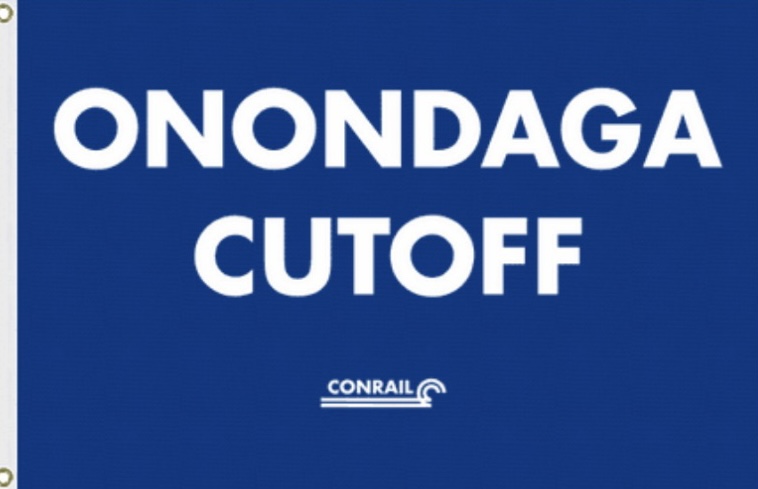Operating trains on the Onondaga Cutoff is one of the highlights of the railroad. The weekend of January 21 and 22 2023 was one where we not only hosted a session, but I was able to attend another one, too.
The OC session modeled a period from about 3pm to about 3 am on a typical Saturday - September 17 1994. Thanks to Mark Sullivan and Rich Wisneski, we have photos of the prep as well as some from the session.
Here we are enjoying pizza for supper and doing the safety briefing ahead of running trains. While the safety briefing may sound heavy-handed, it's important to note emergency exits and fire extinguisher locations for people unfamiliar with the house. It's also a time to build some of the atmosphere ahead of the session: what was the temperature on September 17, 1994? What current events get us in a mindset of the 90's? What was the price of gasoline? For our operations to work, our minds need to travel in time a bit as well.
Rich always likes to have a photo of the participants, and this time the group included the kids as well as a number of guests. It takes people to make a railroad work, and we are fortunate to have a number of good ones! This session ran into the darkness with a simulated sunset, and the fun continued. Amtrak train #276 after its run was tied down at Island Yard.
And, later, SEEL from Selkirk, NY to Elkhart, IN was working up at Onondaga Yard, highlighted by the dwarf signal at CP280.
Nighttime brings a magic to the OC, and one of the best spots is the fuel pad where locomotives are serviced through the night. Two B23-7's idle while being fueled.
Then, Sunday, I was fortunate to be able to attend the operating session at Tony Koester's famous Nickel Plate Road layout, set in Illinois in 1954. Tony gives his briefing before the session, with regular operator Bill Jamboor sitting behind him.
While operations isn't the way most modelers choose to participate in the hobby, it is one of the niches that helps set our hobby apart from other modeling hobbies. Instead of our models sitting on a shelf, in many cases our hard work can be displayed in motion, as intended. Operations models not just equipment or structures, but the dynamic environments where the prototypes run and - most critically - the coordination with others to accomplish a task. Operations takes us from train models to modeling railroading.
On another positive note, see you in Springfield on Saturday and Sunday - if you're at the big Amherst Society show this year, January 28 & 29, stop over at introduce yourself at the Onondaga Cutoff table: Better Living Center Section 4, Table L!







